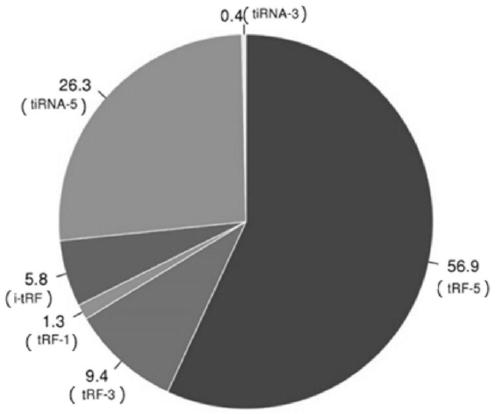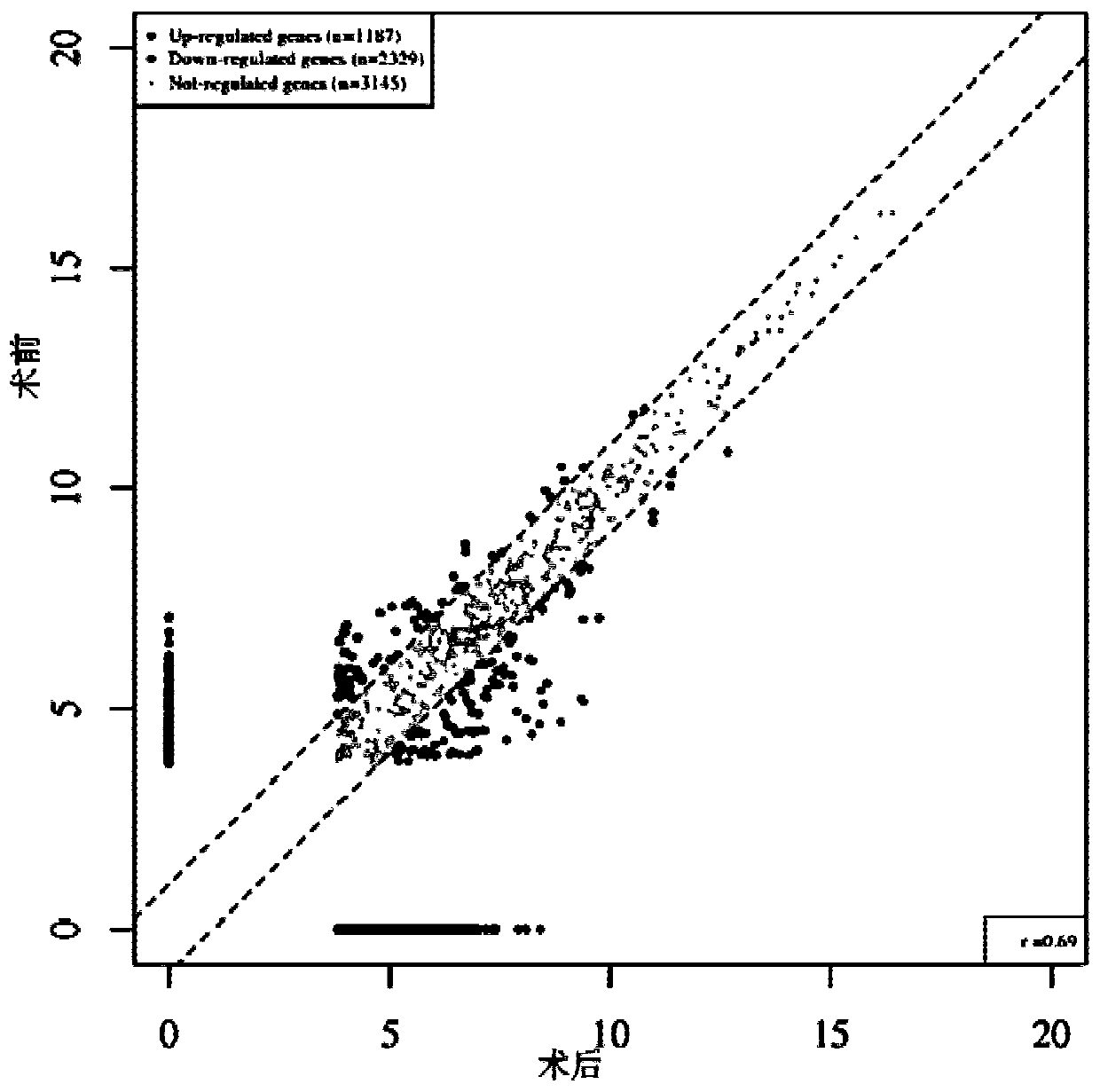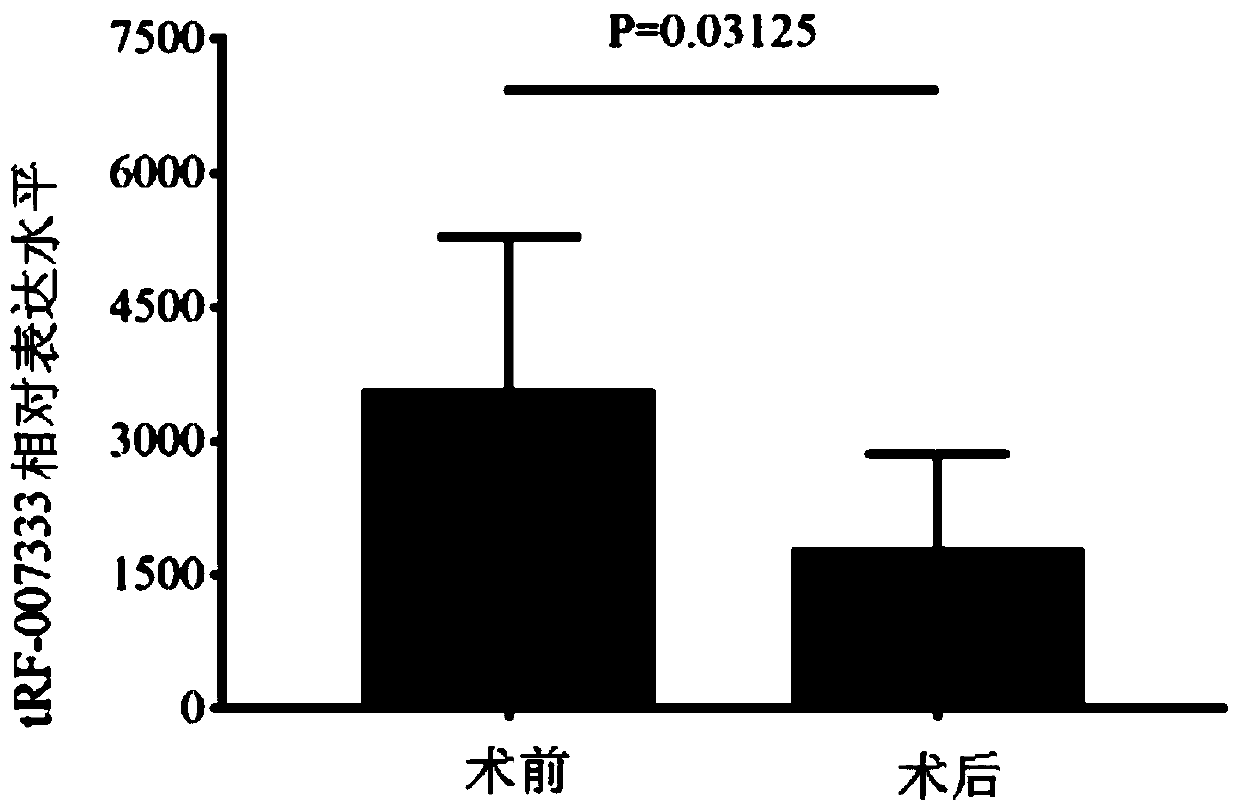tRNA-derived fragment (tRF) related to non-small cell lung cancer (NSCLC) and application of tRF
A kit and inhibitor technology, applied in tRF and its application fields, can solve the problem of limited molecular markers for the diagnosis of non-small cell lung cancer
- Summary
- Abstract
- Description
- Claims
- Application Information
AI Technical Summary
Problems solved by technology
Method used
Image
Examples
Embodiment 1
[0060] Example 1 Discovery of AS-tDR-007333
[0061] 1. Selection of clinical research samples
[0062] (1) NSCLC cases diagnosed by pathology;
[0063] (2) The case has not undergone surgery, radiotherapy and chemotherapy before blood collection;
[0064] (3) A healthy control group matched with the age of the cases.
[0065] Blood collection time: preoperative blood is collected before anesthesia, and postoperative blood is collected 3-5 days after operation.
[0066] Collection standard: Collect 10ml of peripheral blood uniformly using blood collection tubes containing EDTA anticoagulant, mix them upside down, and put them in a 4°C refrigerator for temporary storage as soon as possible. Centrifuge within 12 hours (3000rpm, 5 minutes), use a disposable sterile dropper or pipette gun in the ultra-clean workbench to collect the upper layer of plasma and the lower layer of blood cells respectively, and place them in a 2ml external screw-cap cryopreservation tube. Mark the p...
Embodiment 2
[0080] Example 2 Analysis of expression differences of AS-tDR-007333
[0081] 1. Extraction of cellular RNA
[0082] (1) After washing the cells twice with PBS, add 1ml TRIzol reagent and let stand at room temperature for 10 minutes;
[0083] (2) Add 200 μl chloroform, close the cap tightly, shake vigorously for 30 seconds, and place at room temperature for 10 minutes;
[0084] (3) Centrifuge at 12000g, 4°C for 20 minutes, absorb the upper aqueous phase, add a new 1.5ml centrifuge tube, add 600μl pre-cooled isopropanol to precipitate RNA, mix well, and place at room temperature for 10 minutes;
[0085] (4) Centrifuge at 12000g, 4°C for 10 minutes, discard the supernatant;
[0086] (5) Use 75% ethanol prepared in DEPC water to slowly and gently adhere to the wall and add to the centrifuge tube to clean the RNA;
[0087] (6) Centrifuge at 7500g at 4°C for 10 minutes, suck up the ethanol in the tube, dry at room temperature for 5-10 minutes, and add 10-30 μl of DEPC water;
...
Embodiment 3
[0118] Example 3 Effect of overexpression or underexpression of AS-tDR-007333 on cell proliferation
[0119] 1. The effect of AS-tDR-007333 on the proliferation of NSCLC cell PC9.
[0120] Transfect the overexpressed single chain of AS-tDR-007333 (SEQ ID No.1) and its negative control AS-tDR-007333-NC (SEQ ID No.4) into PC9 cell lines respectively, culture for 48 hours, and adjust the cell density 2.5x10 4 / ml, spread into a 96-well plate at a concentration of 5000 cells / well. Set aside 5 wells in each plate as blank control wells.
[0121] Put the cells in the incubator for 6-12 hours; start testing after the cells adhere to the wall, which is recorded as the D0 time point; take 24 hours as the recording point, and so on as D1, D2, D3; 3.5ml complete medium + After 350 μl of CCK-8 reagent was thoroughly mixed, it was added to the experimental wells and blank control wells at a volume of 110 μl per well. After adding the samples, incubate in an incubator for 1 hour; take o...
PUM
 Login to View More
Login to View More Abstract
Description
Claims
Application Information
 Login to View More
Login to View More - R&D
- Intellectual Property
- Life Sciences
- Materials
- Tech Scout
- Unparalleled Data Quality
- Higher Quality Content
- 60% Fewer Hallucinations
Browse by: Latest US Patents, China's latest patents, Technical Efficacy Thesaurus, Application Domain, Technology Topic, Popular Technical Reports.
© 2025 PatSnap. All rights reserved.Legal|Privacy policy|Modern Slavery Act Transparency Statement|Sitemap|About US| Contact US: help@patsnap.com



